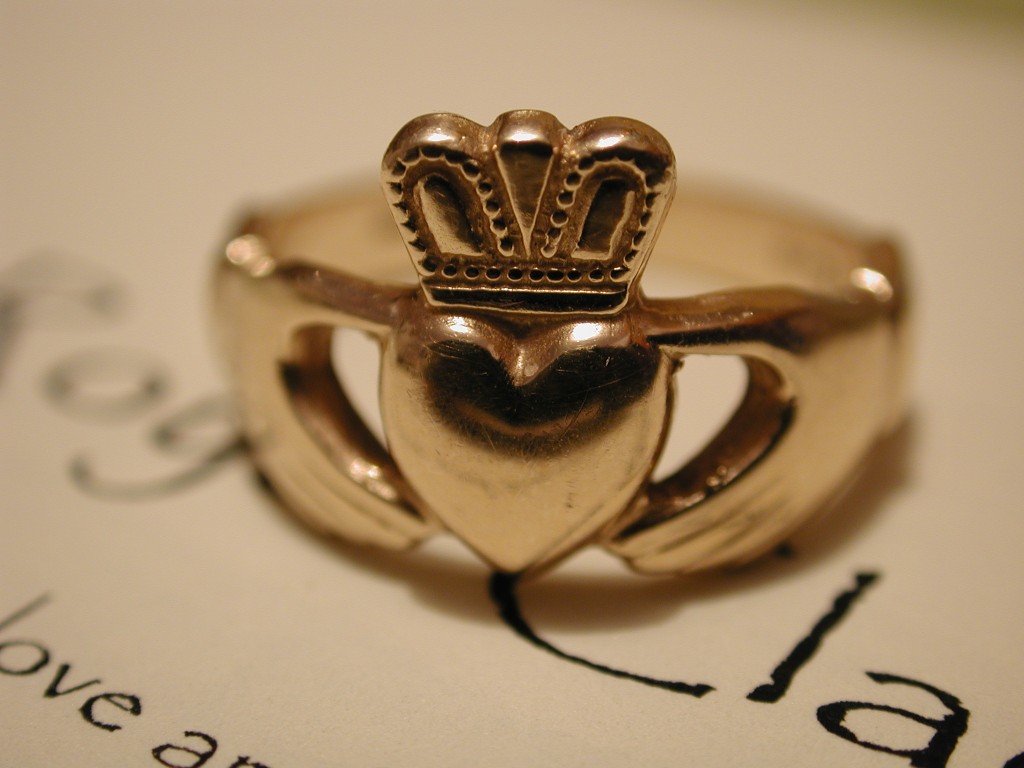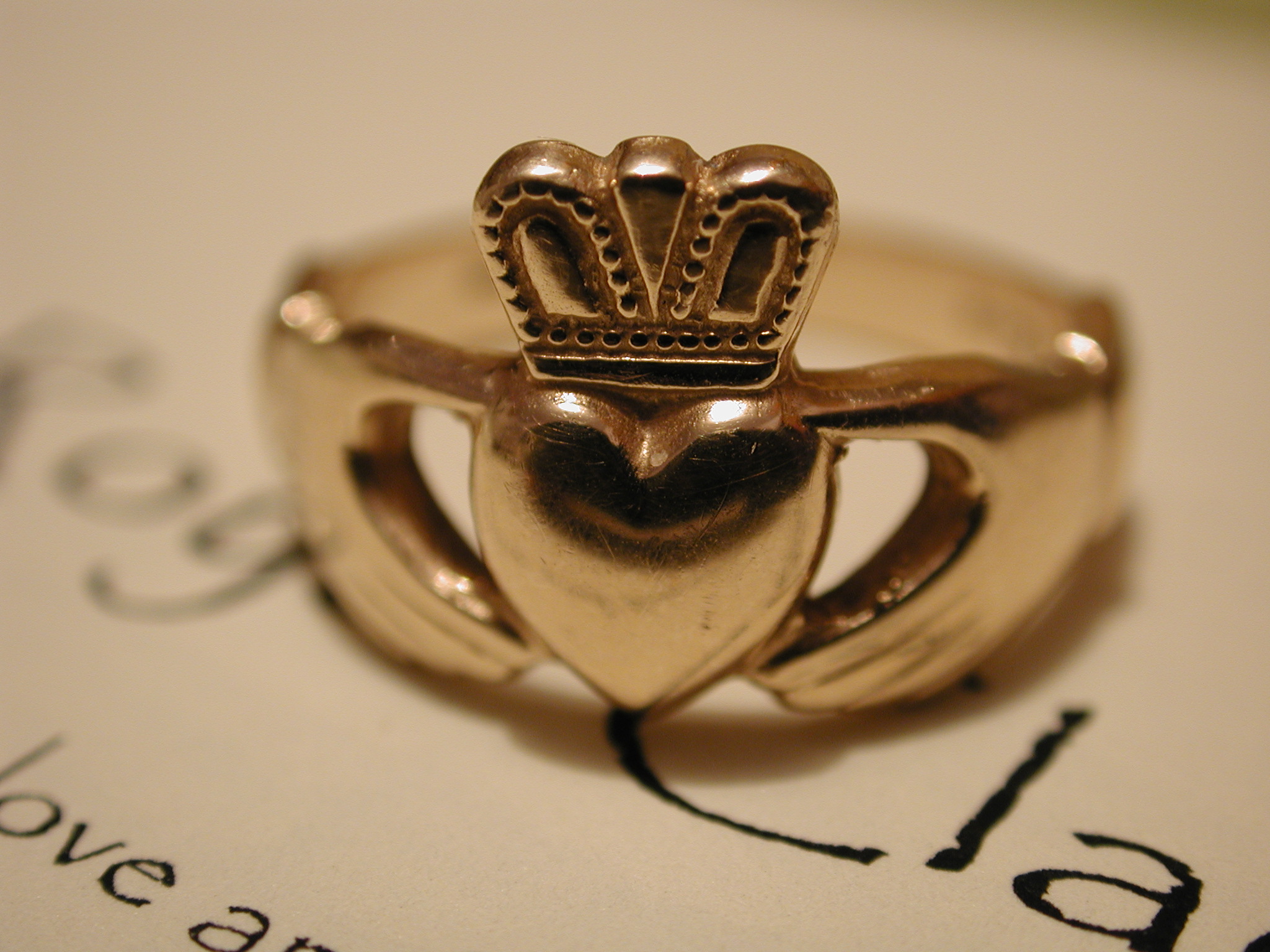
The Claddagh Ring is a traditional Irish ring depicting two hands clutching a heart complete with crown.
The two hands symbolize friendship, the heart represents love and the crown represents loyalty.
It is generally worn as a cultural symbol and as an engagement/wedding ring.
The Fenian Ring, without the crown, is a slightly different take on the design.
It takes its origins in the small fishing village of Claddagh, just outside the old walls of Galway and now part of the city. The ring as we know it was first produced in the 17th century.
Legend tells us that a boat from the village was captured by Turkish pirates and the crew taken and sold as slaves. One of the
crew, a young man called Richard Joyce was to have been married that very week.
During his captive years never forgetting his girl back home, he made a ring of gold for her, learning the art from Turkish goldsmiths. After many years Richard eventually earned his freedom and returned to Ireland. He found his girl had never given up hope of seeing him again, so he gave her the ring.
The way a Claddagh ring was worn on the hand was usually intended to convey the wearer’s relationship status:
- On the right hand with the point of the heart toward the fingertips, the wearer is single and may be looking for love.
- On the right hand with the point of the heart toward the wrist, the wearer is in a relationship (suggesting their heart has been “captured”).
- On the left hand with the point of the heart toward the fingertips, the wearer is engaged.
- On the left hand with the point of the heart toward the wrist, the wearer is married.
Luca Cattaneo


